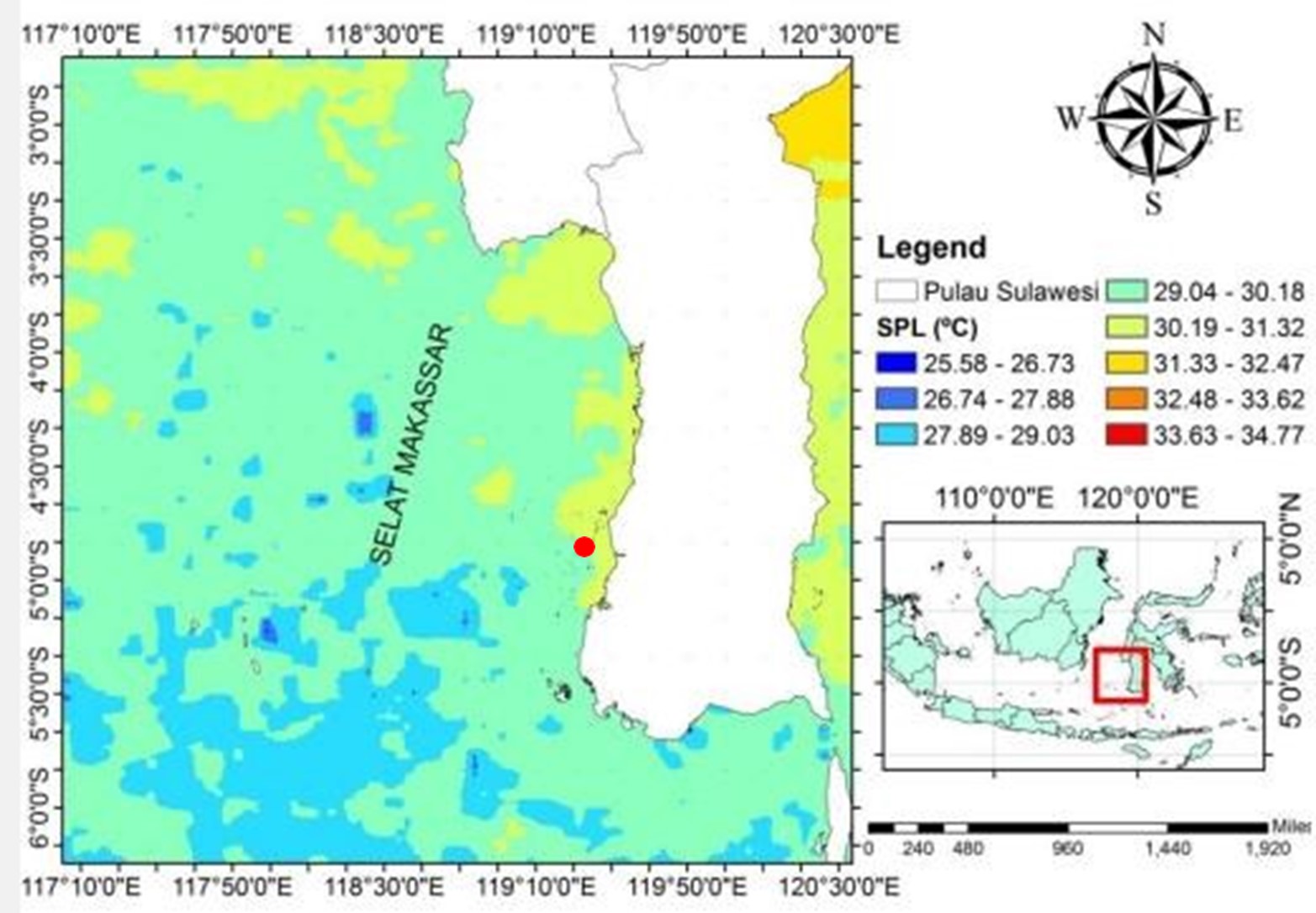APPLICATION OF OCEAN HEAT AS RENEWABLE ENERGY IN THE MAKASSAR STRAIT LOCATION USING THE OCEAN THERMAL ENERGY CONVERSION (OTEC) METHOD
DOI:
https://doi.org/10.62012/sensistek.v6i2.31710Keywords:
Kata Kunci : Ocean Thermal Energy Conversion, Energi Terbarukan, Selat MakassarAbstract
Abstract Indonesia is an archipelagic country that has many bays and straits. Indonesia has a lot of huge potential in its seas. The Makassar Strait shows strong potential because it has a constant and high temperature, especially in the surface layer of the water. There are several types of energy resources that come from sea water, including tidal energy, energy from ocean waves, and ocean tide energy. Ocean Thermal Energy Conversion is a form of renewable energy developed by Indonesia which is a method of converting solar thermal energy by utilizing the cycle of sea surface temperature with temperature at depth. One of the technologies resulting from OTEC is marine thermal power plants. OTEC's performance will not be able to withstand sea storms beyond its time. The potential for OTEC in Indonesian maritime areas can reach 2.5 x 1023 joules. The marine thermal energy conversion efficiency is 3% which produces 240,000 MW of electricity.. OTEC can be used as alternative energy in the long term when fossil fuels, natural gas and other energy are in short supply. Environmentally friendly energy and unlimited availability. Cost is a factor that needs to be considered when implementing OTEC, where there are development models, maintenance costs and large accommodation costs. In addition, OTEC has relatively low engine efficiency when compared to other power plants. The potential possessed by the waters of the Makassar Strait is obtained at the location point at coordinates 01°01'51"N - 120°13'21"E with a floating plant platform with a distance from the beach of 18.63 km with a clean power of 13.40 MW. Key words: Ocean Thermal Energy Conversion, Renewable Energy, Makassar Strait.Downloads
References
Hanan, Akhmad. 2015. Pemetaan Potensi Ocean Thermal Energy Conversion (OTEC) di Indoneisa. Thesis: Universitas Pertahanan.
Hammad, F. K., dkk. 2020. Identifikasi Potensi Ocean Thermal Energy Conversion (OTEC) di Selat makassar Utara. Indonesian Journal of Oceanography, Vol 02, No 2 .
Syamsuddin, dkk. 2015. Ppotensi OTEC di Perairan Indonesia. Konferensi dan Pameran Indonesia-Energi Baru Terbarukan dan Konservasi Energi,.
Putri, et al. 2022. Hubungan Hasil Tangkapan Ikan Pelagis Kecil dengan Suhu Permukaan Laut dan Klorofil di Perairan Selat Makassar. Jurnal Iktiologi Indonesia, Vol 22, hlm 65-76.
N. Nadya Dan A. Salim, “Pengaruh Sea Level Rise Di Wilayah Perkotaan Indonesia”, Sensistek, Vol. 6, No. 1, Hlm. 52-55, Mei 2023.













